ExhibitionsTAMAMURA Hokuto: Revolutionary of the Japanese-Style Painting
TAMAMURA Hokuto: Revolutionary of the Japanese-Style Painting
HOME > Exhibitions > TAMAMURA Hokuto: Revolutionary of the Japanese-Style Painting
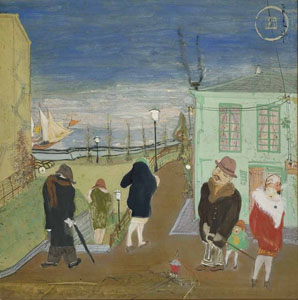
TAMAMURA Hokuto (c. 1932) Scene in a Port Town
The National Museum of Modern Art, Kyoto
TAMAMURA Hokuto (Zennosuke; 1893–1951) was born in the central ward of Kyoto to a family that ran a shop dealing in geta, a type of Japanese footwear. He graduated from the Painting Department of the Kyoto Municipal School of Arts and Crafts in 1911, and went on to study under KIKUCHI Hōbun at the Kyoto Municipal Fine Arts College. Upon graduating in 1915, he founds Mitsuritsu-kai, an association for studying and exhibiting nihonga (Japanese-style painting), with his colleagues from the two schools, including OKAMOTO Shinsō, KAINOSHŌ Tadaoto, and IRIE Hakō. He also submits Inariyama, Kyōgokokuji, Kiyomizudō to the 2nd Saikō Inten (Reorganized Japan Fine Arts Academy Exhibition), where his work is accepted for the first time. In 1916, he relocates to Tokyo to study at the Academy, and in 1918, he submits Ugetsu Monogatari (Tales of Moonlight and Rain) to the 5th Saikō Inten. This time, he wins an award and receives a nomination as an associate member of the Academy, and thus makes his mark. However, he expresses dislike for conventional nihonga and leaves the Academy after submitting his work one last time to the 6th Saikō Inten.
From then on, Tamamura dedicates his efforts to avant-garde movements, such as “Daiichi Sakka Dōmei (D.S.D.),” “Sanka,” and “Tan’i Sanka (Unit Sanka).” During this period, he also presents avant-garde 3D works (now defunct), is associated with founding avant-garde magazines such as Epoch and GE.GJMGJGAM.PRRR.GJMGEM (G.G.P.G.), and takes part in a widely varied range of artistic activity, as seen for instance in his prolific printmaking. He continues to hold solo exhibitions, presenting a brand-new interpretation of nihonga with his own uniquely grotesque and humorous style, a representative example being his major work Ugetsu Monogatari Picture Scrolls, composed of nine scrolls that will be shown for the first time in eighty-odd years in the present exhibition. In 1930, Tamamura founds an association named after himself, the Hokuto-sha, with the aim to spread a new conception of nihonga by creating opportunities to present work with like-minded artists. He paints nihonga portraying moments in everyday life or focusing on everyday sentiments, exemplified by such works as Holiday, which portrays a father and son playing catch.
The present exhibition will introduce the entire scope of Tamamura’s work—known until now merely in fragments—for the very first time, through approximately 140 works and materials, such as magazines.
Related Events
Commemorative lecture: “About My Father, TAMAMURA Hokuto”
Date: January 26 (Sat.) 1:30–3:00PM (numbered tickets distributed 11:00AM–)
Place: Lecture hall (maximum capacity 100); free
Lecturer: TAMAMURA Toyo’o (essayist/artist)
in Japanese only
- Exhibition Dates
- Tuesday, January 8 – Sunday, February 17, 2008
- Closed on Mondays
-
Exceptions: Open Jan. 14 (Mon./holiday) and Feb. 11 (Mon./holiday),
- closed Jan. 15 (Tue.) and Feb. 12 (Tue.)
- closed Jan. 15 (Tue.) and Feb. 12 (Tue.)
- Organizers
- The National Museum of Modern Art, Kyoto
- The Museum of Modern Art, Kamakura and Hayama
- The Kyoto Shimbun Co., Ltd.
- Nihon Keizai Shimbun, Inc.
- Admission
- Advance tickets: Ticket Pia, FamilyMart (P code: 687-678), Lawson (L code:
- 56089), other major ticket vendors and convenience stores
| Day of admission | Advance | Group (20 or more) | |
|---|---|---|---|
| Adult | 830 | 700 | 560 |
| University students | 450 | 350 | 250 |
| High school students | 250 | 200 | 130 |
| Junior high and younger | Free | Free | Free |
| Part I only (Jan. 8 – Jan. 27) | Part II only (Jan. 29 – Feb. 17) | ||||
|---|---|---|---|---|---|
| 18 | Umihiko | c. 1926 | 10 | Tales of Ise (Utsuyama) | 1926 |
| 20 | Chloranthus glaber | c. 1926 | 17 | Fishing | c. 1926 |
| 23 | Snow at Dusk | c. 1926 | 19 | Chloranthus glaber | c. 1926 |
| 26 | Tales of Ise (Utsuyama) | 1927–28 | 22 | Mid-Autumn | c. 1926 |
| 28 | Night View of Cherry Blossoms in Maruyama | 1927–28 | 24 | Camellia | c. 1926 |
| 30 | Tamukeyama Shrine, Nara | 1927–28 | 31 | Tama River, Mt. Koya | 1927–28 |
| 38 | Yoro (The Aged) | 1928 | 33 | Specialities of the Inland Sea | 1927–28 |
| 40 | Old Pine Trees | 1928 | 35 | Tales of Genji (Koshibagaki) | 1927–28 |
| 47 | Paying Homage at Itsukushima | 1928–29 | 39 | Little Birds and Wisteria | 1928 |
| 53 | Tale of Genji | 1928–29 | 43 | Buddha | 1928 |
| 58 | Grape Vines | 1928–29 | 48 | (Record of) The War of Yashima | 1928–29 |
| 74 | A Couple of Cranes | 1929 | 57 | Little Bird and Chrysanthemums | 1928–29 |
| 75 | Cock and Wintry Field | 1929 | 59 | A Couple of Cranes in Winter Woods | 1928–29 |
| 79 | Plum Blossoms | c. 1929–32 | 80 | Tales of Genji | c. 1929–32 |
| 103 | Landscape | 1943 | 81 | Tea Seller | c. 1929–32 |
| 104 | Swallow and Willow | 1943 | 112 | Landscape of Shodoshima | 1943 |
| 119 | Indian Chrysanthemum | 1943 | 130 | Peonies | c. 1943 |
| 131 | Two Vases and Flowers | c. 1943 | 132 | Cornflower and Still Life | c. 1943–50 |
| 27 | Uji | 1927–28 | 55 | Two Roosters | 1928–29 |
|---|---|---|---|---|---|
| 29 | Yase-Ohara | 1927–28 | 56 | Little Birds and Dogwood | 1928–29 |
| 32 | Itsukushima Shrine | 1927–28 | 76 | Little Bird and Chrysanthemum | 1929 |
| 34 | Gorge in Shodoshima | 1927–28 | 77 | Little Birds and Maple | 1929 |
| 49 | Red Hollyhocks | 1928–29 | 116 | Pumpkin | 1943 |
| 50 | White Herons | 1928–29 | 118 | Quails | 1943 |
| 54 | White Crane beneath a Pine Tree | 1928–29 |
- Additionally, the following works which are specially on display are not included in the exhibition catalogue.
- Landscape (1912)
- Album of Flowers (1935)
- A Vase and an Akebi (c. 1943)
- Model of the TAMAMURA Hokuto Residence
- Publicity Materials
- The Museum of Modern Art, Kamakura flyer
- PDF file (775KB)
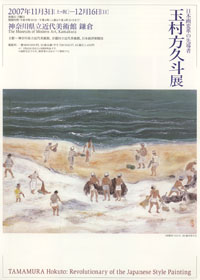
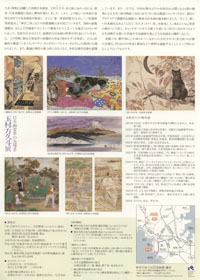
- Flyer PDF file (781KB)
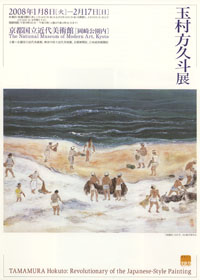
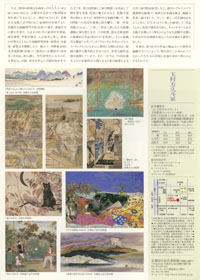
- Other Museums
- The Museum of Modern Art, Kamakura 2007/11/03 (Sat./holiday) – 12/16 (Sun.)
Top of this page




